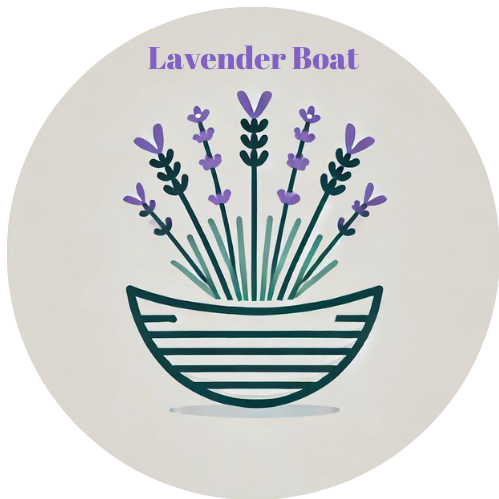Discover the power of lavender for wound healing with our comprehensive guide. Learn about its benefits, how to use it, and why it’s an excellent natural remedy for wound care.
Listen to the Guide:
Hello, Friends!
Did you know lavender isn’t just a pretty flower with a soothing scent? It also has amazing healing properties, especially regarding wound care.
Today, we will explore how lavender can help heal wounds and why it might become your go-to natural remedy. So, grab a cup of tea, get comfy, and dive into the world of lavender and its incredible healing powers!
Understanding Wound Healing
Wound healing is a complex process that our bodies go through to repair damaged skin and tissues.
Brief Explanation of the Wound Healing Process
Our body immediately gets to work when we get a cut or scrape. The healing process involves several stages: inflammation, formation, and remodelling. First, the body stops the bleeding and sends white blood cells to fight potential infections. Next, new tissue forms to replace the damaged area, and finally, the tissue strengthens and matures.
Importance of Proper Wound Care
Proper wound care is essential to prevent infections and ensure that wounds heal correctly. This involves cleaning the wound, keeping it moist and protected, and using suitable treatments to support healing. For example, I once had a nasty cut on my leg that took forever to heal because I didn’t take proper care of it from the start. Lesson learned!
Benefits of Lavender for Wound Healing
Lavender has been used for centuries for its healing properties, and modern science backs up its effectiveness.
Scientific Studies Supporting Lavender’s Effectiveness
Several studies have shown that lavender can effectively promote wound healing. A study published in the journal Evidence-Based Complementary and Alternative Medicine found that lavender oil promotes wound healing by increasing tissue formation and reducing inflammation. Another study in BMC Complementary Medicine and Therapies highlighted lavender’s antibacterial properties, which help prevent infections.
Personal Stories and Testimonials
Real-life examples can be very encouraging. My friend Sophie had a minor burn from cooking and used lavender oil on it. She was amazed at how quickly it healed without leaving a scar. It’s these kinds of stories that highlight the practical benefits of lavender.
How to Use Lavender for Wound Healing
There are several effective ways to use lavender for wound care. Here are some of the best methods:
1. Topical Application
Applying lavender oil directly to the skin can work wonders for wounds.
How to Apply Lavender Oil to Wounds
Dilute a few drops of lavender essential oil with a carrier oil, like coconut or olive oil. Gently clean the wound with mild soap and water, then apply the lavender mixture to the affected area using a clean cotton ball or pad. Cover with a sterile bandage if needed. Personally, I always keep a small bottle of lavender oil in my first aid kit for this very reason.
Benefits of Topical Application
Topical application allows the lavender oil to directly penetrate the skin, promoting faster healing and reducing the risk of infection. It’s a simple and effective way to use lavender for wound care.
2. Lavender-infused Dressings
Lavender-infused dressings can provide continuous exposure to lavender’s healing properties.
Using Lavender-infused Dressings for Wounds
You can buy pre-made lavender-infused dressings or make your own. Soak a sterile bandage in a mixture of lavender essential oil and water to make your own, then apply it to the wound. Change the dressing daily to ensure the wound stays clean and receives a steady supply of lavender benefits.
Benefits and Best Practices
Lavender-infused dressings are great for providing ongoing treatment. They keep the wound moist, which is crucial for proper healing, and continuously deliver the antibacterial and anti-inflammatory properties of lavender.
3. DIY Lavender Wound Care Products
Making your own lavender wound care products can be fun and effective.
Recipes for Homemade Lavender Wound Care Products
Here are a couple of simple DIY recipes to try:
- Lavender Healing Salve: Melt 1/4 cup of coconut oil and 1/4 cup of beeswax in a double boiler. Remove from heat and stir in 10 drops of lavender essential oil. Pour into a clean container and let it cool. Apply the salve to wounds as needed.
- Lavender Antiseptic Spray: Mix 1 cup of distilled water with 20 drops of lavender essential oil and 1 tablespoon of witch hazel in a spray bottle. Spray the mixture onto wounds and use it to clean and disinfect them.
Benefits of Making Your Own Products
DIY products allow you to control the ingredients and ensure that they’re natural and free from harmful chemicals. Plus, it’s a great way to personalise your wound care routine.
Customising Your Lavender Use
One of the best things about lavender is its versatility. Here are some ways to tailor its use to your specific needs:
Tailoring Lavender Use to Individual Wound Care Needs
Everyone’s skin is different, so finding what works best for you is important. For example, you might want to use a more diluted lavender oil mixture if you have sensitive skin. Combining lavender with other healing herbs like calendula can provide extra benefits if you’re dealing with a more severe wound.
Creating Personalised Wound Healing Routines with Lavender
Consistency is key to seeing the best results. Create a routine that incorporates lavender into your wound care regimen. For example, clean the wound daily, apply lavender oil, and use a lavender-infused dressing. Adjust your routine based on how your wound responds to the treatment.
Final Thoughts
Lavender is a fantastic natural remedy for wound healing. Its antibacterial, anti-inflammatory, and healing properties can help wounds heal faster and reduce the risk of infection. Whether you choose to use essential oils, lavender-infused dressings, or DIY products, there are plenty of ways to incorporate lavender into your wound care routine. Give it a try and see the amazing benefits for yourself!
I’d love to hear about your experiences with lavender for wound healing.
Have you tried any of these methods?
Share your stories and tips on social media, and tag us. Let’s inspire each other with our lavender wound care journeys!
Did You Find This Guide Helpful?







